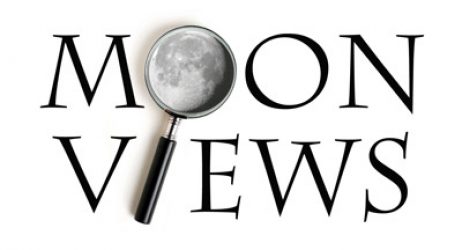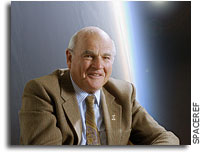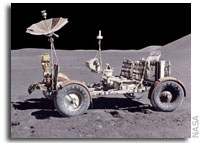
This newly retrieved high resolution image, frame 2051_M, was taken by Lunar Orbiter 2 on 19 November 1966 at 19:13:24 GMT LPI reference Images: [large] [Very Large]

Official website of the Lunar Orbiter Image Recovery Project (LOIRP)

This newly retrieved high resolution image, frame 2051_M, was taken by Lunar Orbiter 2 on 19 November 1966 at 19:13:24 GMT LPI reference Images: [large] [Very Large]

This newly retrieved high resolution image, frame 2063_H2, was taken by Lunar Orbiter 2 on 19 November 1966 at 22:41:08 GMT LPI reference Images: [large] [Very Large]
 Written on the Moon’s weary face are the damages it has endured for the past 4.5 billion years. From impact craters to the dark plains of maria left behind by volcanic eruptions, the scars are all that remain to tell the tale of what happened to the Moon. But they only hint at the processes that once acted — and act today — to shape the surface. To get more insight into those processes, Meg Rosenburg and her colleagues at the California Institute of Technology, Pasadena, Calif. put together the first comprehensive set of maps revealing the slopes and roughness of the Moon’s surface. These maps are based on detailed data collected by the Lunar Orbiter Laser Altimeter (LOLA) on NASA’s Lunar Reconnaissance Orbiter. LOLA and LRO were built at NASA’s Goddard Space Flight Center in Greenbelt, Md. More
Written on the Moon’s weary face are the damages it has endured for the past 4.5 billion years. From impact craters to the dark plains of maria left behind by volcanic eruptions, the scars are all that remain to tell the tale of what happened to the Moon. But they only hint at the processes that once acted — and act today — to shape the surface. To get more insight into those processes, Meg Rosenburg and her colleagues at the California Institute of Technology, Pasadena, Calif. put together the first comprehensive set of maps revealing the slopes and roughness of the Moon’s surface. These maps are based on detailed data collected by the Lunar Orbiter Laser Altimeter (LOLA) on NASA’s Lunar Reconnaissance Orbiter. LOLA and LRO were built at NASA’s Goddard Space Flight Center in Greenbelt, Md. More
 NASA has created a new interactive web-based tool that incorporates observations from past and current lunar missions creating one of the most comprehensive lunar research websites to date.
NASA has created a new interactive web-based tool that incorporates observations from past and current lunar missions creating one of the most comprehensive lunar research websites to date.
The Lunar Mapping and Modeling Project at NASA’s Marshall Space Flight Center in Huntsville, Ala. has created an online set of capabilities and tools that will allow anyone with an Internet connection to search through, view, and analyze a vast number of lunar images and other digital products. The data and tools available through the project website will allow researchers to perform in-depth analyses to support mission planning and system design for lunar exploration and science missions. It will permit detailed scientific analysis and discovery and open additional educational and outreach opportunities.

Note: Thanks to Al Kossow at the Computer History Museum for finding and scanning these pages in for us.
Excerpt: “Fifty Years of Data in One Week Recently, Oran W. Nicks, NASA’s Director of Lunar and Planetary Programs, remarked: “one astronomer has said that more information has been obtained in the first seven days of the Lunar Orbiter I project than in the last 50 years of study of the Moon.” Truly, the matchless cooperation and inspired creativity exhibited in the design and construction of Lunar Orbiter spacecraft and, supporting equipment by NASA, the scientific community, and American industry has helped us to take those longer-strides that President Kennedy called for in 1961 when he first spoke of the Apollo landing of a man on the Moon and returning him safely to the earth. Preceeding our men on the Moon, are three unmanned missions that are mapping possible landing areas, testing surface strength and composition, and establishing the launch, guidance and navigation technology, for a successful manned excursion. Ranger (now completed) and Surveyor are managed by Jet Propulsion Laboratory in Pasadena, California. Overall Lunar Orbiter management is by the Langley Research Center, Hampton, Virginia. The Jet Propulsion Laboratory provides tracking and data acquisition support for the Orbiter program.”
Newsletter is presented below
 “Innovate Our World, a Maryland educational nonprofit, has partnered with a leading Google Lunar X prize competitor, Astrobotic Technology of Pittsburgh, PA, to help student teams from two central Maryland high schools design payload concepts suitable for Astrobotic’s planned 2013 Tranquility Trek mission to the Apollo 11 landing site. Using information about the lunar environment, previous missions to the Moon, basics of conceptual payload design, and local experts, students from Glenelg Country School in Ellicott City, Maryland and Oakland Mills High School in Columbia, Maryland proposed and designed two lunar payloads and will present their concepts to Astrobotic Technology on Saturday, May 21, 2011 at 1 p.m.” More
“Innovate Our World, a Maryland educational nonprofit, has partnered with a leading Google Lunar X prize competitor, Astrobotic Technology of Pittsburgh, PA, to help student teams from two central Maryland high schools design payload concepts suitable for Astrobotic’s planned 2013 Tranquility Trek mission to the Apollo 11 landing site. Using information about the lunar environment, previous missions to the Moon, basics of conceptual payload design, and local experts, students from Glenelg Country School in Ellicott City, Maryland and Oakland Mills High School in Columbia, Maryland proposed and designed two lunar payloads and will present their concepts to Astrobotic Technology on Saturday, May 21, 2011 at 1 p.m.” More
NASA NLSI: “I stopped by to visit the folks at McMoon, more widely known as the Lunar Orbiter Image Recovery Project: moonviews.com/ More about the project below, but one of the cool parts is that the images are being restored in an old McDonald’s at NASA Ames Research Center. Also note the nice geek touches like empty pizza boxes 🙂 This project, LOIRP, is recovering decades old data, digitizing data from the Lunar Orbiter mission of the 1960’s, thus bringing up the highest resolution data of the Moon from that time. This will greatly complement all the great Moon missions of this time, including the upcoming Lunar Reconnaissance Orbiter mission launching in two weeks!”
Abandoned McDonald’s Serves Restored NASA Moon Pictures, National Geographic
“Inside this abandoned Mcdonald’s a bit of the past is moving into the future. Where customers used to down Big Macs, an ancient video tape machine spits out grainy images. Behind the counter, next to the Frymaster, there are endless stacks of tape reels. The former fast-food joint has now become mission command for a new effort to save some old NASA history.”

This high resolution image, subframe 2031_H, was taken by Lunar Orbiter 2 on 18 November 1966 at 22:23:16 GMT LPI reference Images: [Large]

This newly retrieved high resolution image, subframe 2033_H1, was taken by Lunar Orbiter 2 on 19 November 1966 at 02:54:26 GMT LPI reference Images: [large]
 Baruch Blumberg Passes Away, David Morrison, SETI Institute
Baruch Blumberg Passes Away, David Morrison, SETI Institute
“I was privileged to have lunch with Barry the day he died. He was attending a conference at Ames discussing exploration planning and its relationships with science and education. He presented a paper on the value of citizen science, where thousands of ordinary people can contribute significantly to science while also enjoying themselves in working with real spacecraft data, such as the high-resolution images now being received from NASA’s Lunar Reconnaissance Orbiter.”
Baruch Samuel Blumberg 1925-2011, earlier post
 What: On April 1, NASA’s Marshall Space Flight Center in Huntsville, Ala., the American Institute of Aeronautics & Astronautics and the U.S. Space & Rocket Center in Huntsville will host a 40th anniversary celebration of the first use of the Lunar Roving Vehicle on the moon. The gala event honors the men and women who designed, tested, built and piloted the original lunar rovers — many of whom are expected to take part in the celebration. Members of the news media are invited to attend.
What: On April 1, NASA’s Marshall Space Flight Center in Huntsville, Ala., the American Institute of Aeronautics & Astronautics and the U.S. Space & Rocket Center in Huntsville will host a 40th anniversary celebration of the first use of the Lunar Roving Vehicle on the moon. The gala event honors the men and women who designed, tested, built and piloted the original lunar rovers — many of whom are expected to take part in the celebration. Members of the news media are invited to attend.